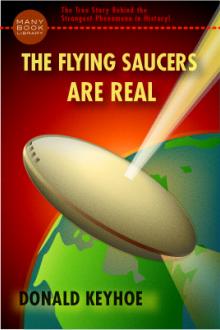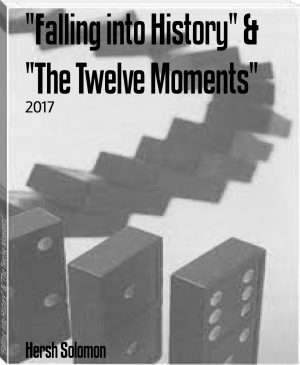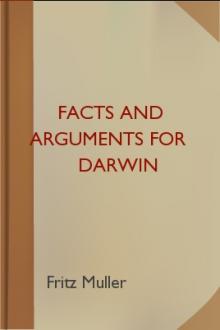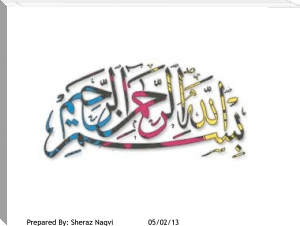The Expression of Emotion in Man and Animals by Charles Darwin (adult books to read TXT) 📕

- Author: Charles Darwin
- Performer: -
Book online «The Expression of Emotion in Man and Animals by Charles Darwin (adult books to read TXT) 📕». Author Charles Darwin
There is another little gesture, expressive of astonishment of which I can offer no explanation; namely, the hand being placed over the mouth or on some part of the head. This has been observed with so many races of man, that it must have some natural origin.
A wild Australian was taken into a large room full of official papers, which surprised him greatly, and he cried out, cluck, cluck, cluck, putting the back of his hand towards his lips. Mrs. Barber says that the Kafirs and Fingoes express astonishment by a serious look and by placing the right hand upon the mouth, Littering the word mawo, which means `wonderful.’ The Bushmen are said[13] to put their right hands to their necks, bending their heads backwards.
Mr. Winwood Reade has observed that the negroes on the West Coast of Africa, when surprised, clap their hands to their mouths, saying at the same time, “My mouth cleaves to me,” i. e. to my hands; and he has heard that this is their usual gesture on such occasions.
Captain Speedy informs me that the Abyssinians place their right hand to the forehead, with the palm outside. Lastly, Mr. Washington Matthews states that the conventional sign of astonishment with the wild tribes of the western parts of the United States “is made by placing the half-closed hand over the mouth; in doing this, the head is often bent forwards, and words or low groans are sometimes uttered.”
Catlin[14] makes the same remark about the hand being pressed over the mouth by the Mandans and other Indian tribes.
[13] Huschke, ibid. p. 18.
Admiration.—Little need be said on this head. Admiration apparently consists of surprise associated with some pleasure and a sense of approval.
When vividly felt, the eyes are opened and the eyebrows raised; the eyes become bright, instead of remaining blank, as under simple astonishment; and the mouth, instead of gaping open, expands into a smile.
Fear, Terror.—The word `fear’ seems to be derived from what is sudden and dangerous;[15] and that of terror from the trembling of the vocal organs and body. I use the word `terror’ for extreme fear; but some writers think it ought to be confined to cases in which the imagination is more particularly concerned.
Fear is often preceded by astonishment, and is so far akin to it, that both lead to the senses of sight and hearing being instantly aroused.
In both cases the eyes and mouth are widely opened, and the eyebrows raised.
The frightened man at first stands like a statue motionless and breathless, or crouches down as if instinctively to escape observation.
[14] `North American Indians,’ 3rd edit. 1842, vol. i. p. 105.
[15] H. Wedgwood, Dict. of English Etymology, vol. ii. 1862, p.
35. See, also, Gratiolet (`De la Physionomie,’ p. 135) on the sources of such words as `terror, horror, rigidus, frigidus,’ &c.
The heart beats quickly and violently, so that it palpitates or knocks against the ribs; but it is very doubtful whether it then works more efficiently than usual, so as to send a greater supply of blood to all parts of the body; for the skin instantly becomes pale, as during incipient faintness. This paleness of the surface, however, is probably in large part, or exclusively, due to the vasomotor centre being affected in such a manner as to cause the contraction of the small arteries of the skin.
That the skin is much affected under the sense of great fear, we see in the marvellous and inexplicable manner in which perspiration immediately exudes from it. This exudation is all the more remarkable, as the surface is then cold, and hence the term a cold sweat; whereas, the sudorific glands are properly excited into action when the surface is heated.
The hairs also on the skin stand erect; and the superficial muscles shiver. In connection with the disturbed action of the heart, the breathing is hurried. The salivary glands act imperfectly; the mouth becomes dry,[16] and is often opened and shut.
I have also noticed that under slight fear there is a strong tendency to yawn. One of the best-marked symptoms is the trembling of all the muscles of the body; and this is often first seen in the lips. From this cause, and from the dryness of the mouth, the voice becomes husky or indistinct, or may altogether fail.
“Obstupui, steteruntque comae, et vox faucibus haesit.”
[16] Mr. Bain (`The Emotions and the Will,’ 1865, p. 54) explains in the following manner the origin of the custom “of subjecting criminals in India to the ordeal of the morsel of rice. The accused is made to take a mouthful of rice, and after a little time to throw it out.
If the morsel is quite dry, the party is believed to be guilty,—
his own evil conscience operating to paralyse the salivating organs.”
Of vague fear there is a well-known and grand description in Job:—“In thoughts from the visions of the night, when deep sleep falleth on men, fear came upon me, and trembling, which made all my bones to shake.
Then a spirit passed before my face; the hair of my flesh stood up.
It stood still, but I could not discern the form thereof: an image was before my eyes, there was silence, and I heard a voice, saying, Shall mortal man be more just than God? Shall a man be more pure than his Maker?” (Job iv. 13)
As fear increases into an agony of terror, we behold, as under all violent emotions, diversified results.
The heart beats wildly, or may fail to act and faintness ensue; there is a death-like pallor; the breathing is laboured; the wings of the nostrils are wildly dilated; “there is a gasping and convulsive motion of the lips, a tremor on the hollow cheek, a gulping and catching of the throat;”[17] the uncovered and protruding eyeballs are fixed on the object of terror; or they may roll restlessly from side to side, huc illuc volvens oculos totumque pererrat.[18] The pupils are said to be enormously dilated. All the muscles of the body may become rigid, or may be thrown into convulsive movements. The hands are alternately clenched and opened, often with a twitching movement.
The arms may be protruded, as if to avert some dreadful danger, or may be thrown wildly over the head. The Rev. Mr. Hagenauer has seen this latter action in a terrified Australian. In other cases there is a sudden and uncontrollable tendency to headlong flight; and so strong is this, that the boldest soldiers may be seized with a sudden panic.
[17] Sir C. Bell, Transactions of Royal Phil. Soc. 1822, p. 308.
`Anatomy of Expression,’ p. 88 and pp. 164-469.
[18] See Moreau on the rolling of the eyes, in the edit. of 1820 of Lavater, tome iv. p. 263. Also, Gratiolet, De la Phys. p. 17.
As fear rises to an extreme pitch, the dreadful scream of terror is heard.
Great beads of sweat stand on the skin. All the muscles of the body are relaxed. Utter prostration soon follows, and the mental powers fail.
The intestines are affected. The sphincter muscles cease to act, and no longer retain the contents of the body.
Dr. J. Crichton Browne has given me so striking an account of intense fear in an insane woman, aged thirty-five, that the description though painful ought not to be omitted.
When a paroxysm seizes her, she screams out, “This is hell!”
“There is a black woman!” “I can’t get out!”—and other such exclamations. When thus screaming, her movements are those of alternate tension and tremor. For one instant she clenches her hands, holds her arms out before her in a stiff semi-flexed position; then suddenly bends her body forwards, sways rapidly to and fro, draws her fingers through her hair, clutches at her neck, and tries to tear off her clothes.
The sterno-cleido-mastoid muscles (which serve to bend the head on the chest) stand out prominently, as if swollen, and the skin in front of them is much wrinkled. Her hair, which is cut short at the back of her head, and is smooth when she is calm, now stands on end; that in front being dishevelled by the movements of her hands. The countenance expresses great mental agony.
The skin is flushed over the face and neck, down to the clavicles, and the veins of the forehead and neck stand out like thick cords. The lower lip drops, and is somewhat everted.
The mouth is kept half open, with the lower jaw projecting.
The cheeks are hollow and deeply furrowed in curved lines running from the wings of the nostrils to the corners of the mouth.
The nostrils themselves are raised and extended. The eyes are widely opened, and beneath them the skin appears swollen; the pupils are large. The forehead is wrinkled transversely in many folds, and at the inner extremities of the eyebrows it is strongly furrowed in diverging lines, produced by the powerful and persistent contraction of the corrugators.
Mr. Bell has also described[19] an agony of terror and of despair, which he witnessed in a murderer, whilst carried to the place of execution in Turin. “On each side of the car the officiating priests were seated; and in the centre sat the criminal himself. It was impossible to witness the condition of this unhappy wretch without terror; and yet, as if impelled by some strange infatuation, it was equally impossible not to gaze upon an object so wild, so full of horror.
He seemed about thirty-five years of age; of large and muscular form; his countenance marked by strong and savage features; half naked, pale as death, agonized with terror, every limb strained in anguish, his hands clenched convulsively, the sweat breaking out on his bent and contracted brow, he kissed incessantly the figure of our Saviour, painted on the flag which was suspended before him; but with an agony of wildness and despair, of which nothing ever exhibited on the stage can give the slightest conception.”
I will add only one other case, illustrative of a man utterly prostrated by terror. An atrocious murderer of two persons was brought into a hospital, under the mistaken impression that he had poisoned himself; and Dr. W. Ogle carefully watched him the next morning, while he was being handcuffed and taken away by the police. His pallor was extreme, and his prostration so great that he was hardly able to dress himself.
His skin perspired; and his eyelids and head drooped so much that it was impossible to catch even a glimpse of his eyes. His lower jaw hung down.
There was no contraction of any facial muscle, and Dr. Ogle is almost certain that the hair did not stand on end, for he observed it narrowly, as it had been dyed for the sake of concealment.
[19] `Observations on Italy,’ 1825, p. 48, as quoted in ‘The Anatomy of Expression,’ p. 168.
With respect to fear, as exhibited by the various races of man, my informants agree that the signs are the same as with Europeans. They are displayed in an exaggerated degree with the Hindoos and natives of Ceylon. Mr. Geach has seen Malays when terrified turn pale and shake; and Mr. Brough Smyth states that a native Australian “being on one occasion much frightened, showed a complexion as nearly approaching to what we call paleness, as can well be conceived in the case of a very black man.” Mr. Dyson Lacy has seen extreme fear shown in an Australian, by a nervous twitching of the hands, feet, and lips; and by the perspiration standing on the skin.
Many savages do not repress the signs of fear so much as Europeans; and they often tremble greatly. With the Kafir, Gaika





Comments (0)